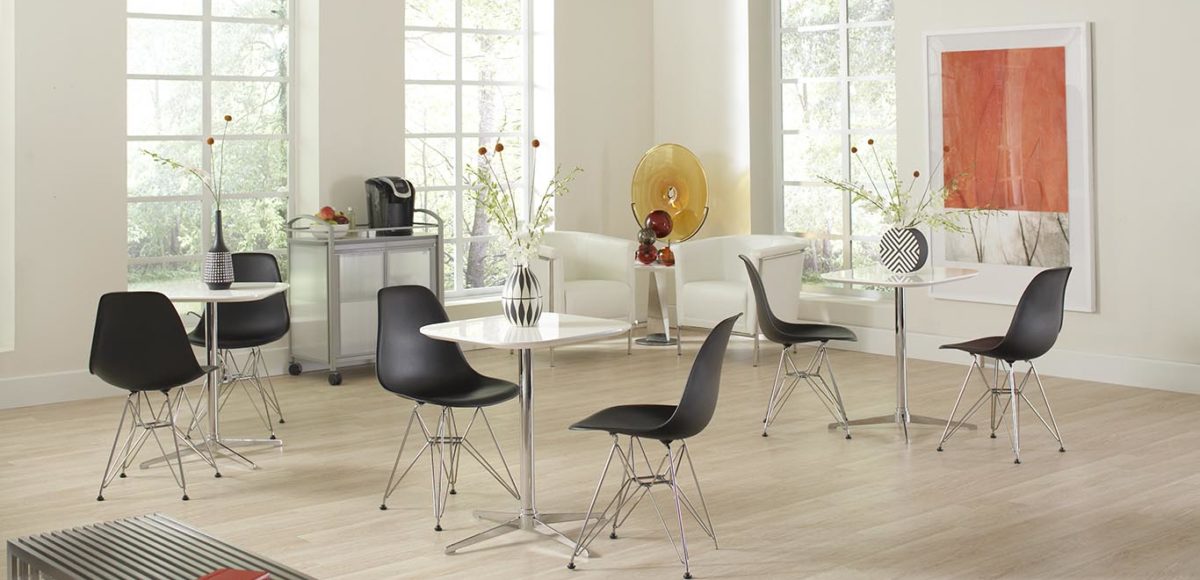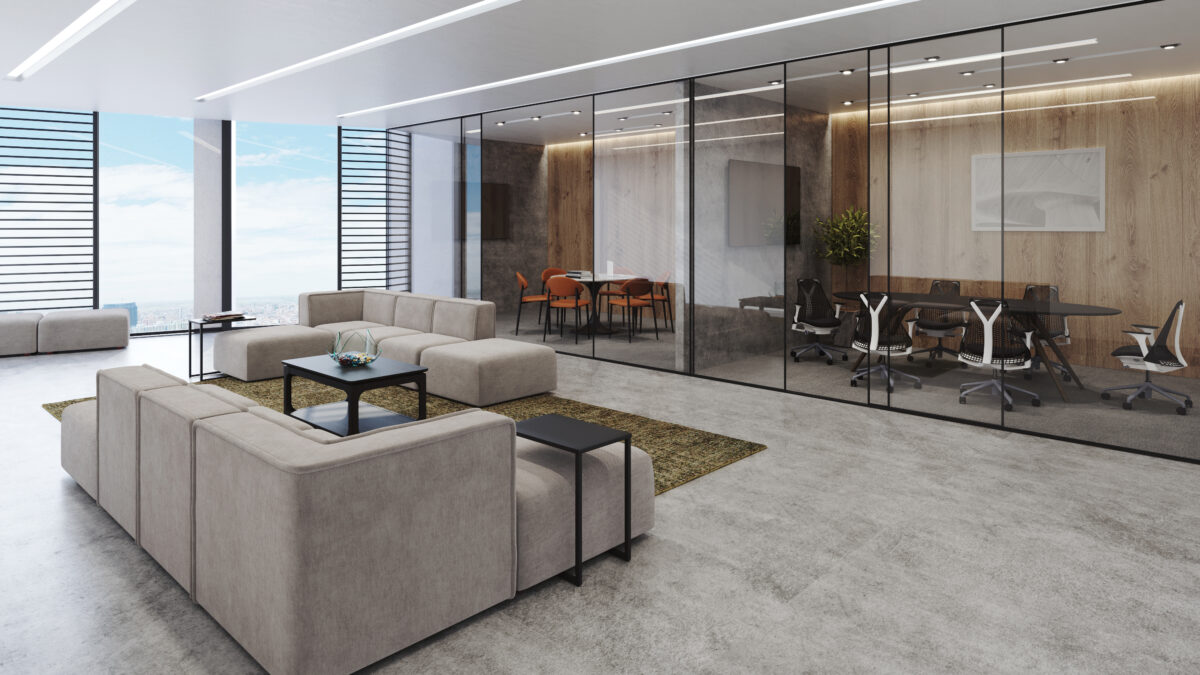If we’ve learned anything from the last couple of years, it’s that it’s nearly impossible to be prepared for everything. Ask any business leader if they could have predicted a pandemic that would disrupt their office space — permanently in many cases — and you’d probably get a variety of answers. Organizations were already flirting with changes in their workspaces in the decade leading up to the COVID-19 pandemic. Still, few foresaw such a major event that would take it over the edge.
And that left many wondering how to prepare for disruptions of all kinds when it occurs. While the “next big thing” that hits an organization will probably not look like the COVID-19 pandemic, there’s no way to predict its impact on the business and, ultimately, the bottom line.
Or is it?
At CORT Furniture Rental, we’ve paired CORT Furniture-as-a-Service™ with 4SITE by CORT to create CORT Permanently Flexible® Solutions. No matter what happens, we can arm your workplace with the tools that keep your organization agile to new changes without your bottom line needing to take a hit. By combining the data found with our space utilization sensors and model, you can set your business up to optimize against the unknown for years to come.
Here’s how.
How Are the Costs of a Workplace Typically Defined?
Before you can create a workspace that is permanently flexible, you’ll need to consider some workplace occupancy metrics. First, you’ll need the answer the question: How much square footage does your organization really need? If you’re paying for space you don’t need, you’re wasting money. If you don’t have enough space, you’ll find yourself looking for an additional solution to handle your overflow. This limited amount of space can also affect your employees’ productivity.
The average amount of office space needed per employee has changed over the years. As we started the 21st century, it was around 325 square feet, but that shrunk to about 160 square feet before the pandemic. After the pandemic, the number has crept up about 20%.
But we all know that average and one-size-fits-all numbers aren’t helpful in every situation. While there are many ways to determine your own occupancy metrics, the cost of office space per square foot and the cost of office space per employee are the two most common.
Cost of Office Space Per Square Foot
As we shared before, the cost of office space per square foot is probably the most common model in commercial real estate. It’s so common that, at times, it can also be included within a commercial lease. This is mainly because this formula is easy to calculate and gets right to the point. However, it doesn’t take into consideration how employees use office space. When teams work on a hybrid schedule or prefer collaborative spaces, this can be overlooked within this calculation.
Cost of Office Space Per Employee
The cost of office space per employee is a metric that a business leader is more likely to be concerned with rather than a commercial real estate professional. This is mainly because, in order for this formula to work, a leader must consider how much space is needed based on the number of employees they have. For example, in the pre-pandemic office world, we can assume there would be at least 50 employees in space and they would need at least 160 square feet. This would require a leader to look for a space of around 8,000 square feet to accommodate this need. Using this model allows a little more thought about how employees will use the workspace rather than looking at overall square feet. This model also considers how much space employees will need to be productive as well as satisfied with the office. But again, the downside in either formula is that the office is no longer fixed, it’s a space that’s constantly evolving, and what works today may not work tomorrow further emphasizing the need for flexible solutions.
How Can a Permanently Flexible Space Support These Costs Measurements?
Both models have their pros, but they’re not without their cons. And as the workplace continues to shift and change, they can leave you with spaces that aren’t right for your employees or the needs of your organization. That’s where the idea of becoming Permanently Flexibile comes into play. As we shared before, space utilization sensors and space optimization data from 4SITE by CORT and CORT Furniture-as-a-Service (FaaS) can make the workplace flexible now and many years down the line.
First, sensors take the guesswork out of understanding workplace occupancy. There’s no room for human error, guesswork, or assumptions. With our sensors, you can uncover hard facts and data about the way your employees interact with your office and which areas should be optimized for better performance.
When sensors are placed in areas around an office like individual desks, conference rooms, or collaborative spaces, as employees interact within these spaces, the sensors record data. This information can be accessed in real-time and used to start making decisions about your existing commercial real estate portfolio. They can also be helpful with providing a bit more certainty around questions about how much space you might need in the future if you want to renew your current lease, and what sort of space configuration is ideal for your specific business and employees.
Once you have an idea of what you need in terms of space utilization and optimization, that’s where FaaS can help. CORT Furniture Rental can provide any additional furniture that’s needed to reconfigure your workplace as your space optimization data dictates.
Instead of buying new furniture, rent it, and use it for as long or as little as you need. Forgo a large initial investment on furnishing when you can change as quickly as your workspace needs and while keeping your office permanently flexible.
Experiment, Measure, Modify and Repeat Within the Workplace
Almost every industry has found itself in the same with their physical workplace right now. That means there is no time like the present to get started. Not sure where to start? Try following these four steps:
- Experiment: We’re all in unknown territory right now. Your willingness to grow and evolve will help propel your business into the future. Both 4SITE sensor technology and data along with CORT Furniture-as-a-Service provide you with the tools you need to experiment with your office space and see what works, especially in the midst of big changes.
- Measure: Using an occupancy study to measure your workspace is the best way to determine how your space is being utilized and where optimizations should take place. 4SITE space utilization sensors allow you to do that without disrupting your employees and with total objectivity.
- Modify: Use that real-time objective data to make the changes your employees need for satisfaction and to create a positive company culture. Turn private offices into flexible spaces that can be retrofitted for the changing needs of your workforce or an underused conference room into a huddle space for video conferencing. Don’t hesitate to make changes because you don’t want to make a huge investment. FaaS does most of the work for you, and it allows you to modify your space as needed.
- Repeat: The workplace is changing now, and it will keep changing as we go on. Whether those changes are major or minor, no one can say. But with the tools provided by 4SITE and CORT, your organization is prepared to continuously optimize in a world that’s requiring it more and more each day.
Experiment. Measure. Modify. Repeat. It’s that simple. That’s all you need to create the workspace of today and the future. When you partner with 4SITE and CORT, you’ll be amazed at how easy it becomes to set your business up for success and support your bottom line while doing so. Call us today to set up a demo or get started.






